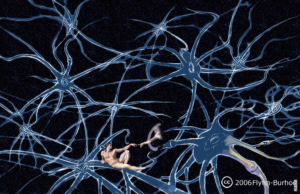Unveiling the Mystery: Diagnosing Typhus
Typhus, a potentially life-threatening infectious disease, has been a subject of fascination and intrigue for centuries. As the National Geographic explores the methods used to diagnose this enigmatic illness, prepare to be captivated by the secrets revealed.
1. Clinical Evaluation
The journey to diagnose typhus begins with a comprehensive clinical evaluation. Skilled physicians meticulously examine the patient’s symptoms, medical history, and exposure to potential risk factors. This process unearths valuable clues that gradually unravel the mystery surrounding the illness.
2. Laboratory Testing
Once the clinical evaluation raises suspicion of typhus, laboratory testing takes center stage. Blood samples are extracted from the patient and subjected to a battery of tests.
3. Serological Tests
Serological tests play a crucial role in confirming a typhus diagnosis. These tests detect specific antibodies in the patient’s blood that are indicative of a recent or ongoing infection. The presence of these antibodies directs medical professionals towards the appropriate treatment course.
4. Polymerase Chain Reaction (PCR)
In certain cases, the use of PCR amplification techniques becomes necessary. This advanced method detects the genetic material of the typhus-causing bacteria. PCR enables a rapid and precise diagnosis, facilitating early intervention and preventing potential complications.
Post
Post
5. Culturing Techniques
Culturing techniques involve growing the typhus bacteria in a controlled laboratory environment. By isolating and identifying the bacteria, medical experts gain a deeper understanding of the specific strain responsible for the infection. This knowledge aids in tailoring the treatment approach to maximize effectiveness.
6. Imaging Studies
In some instances, imaging studies such as X-rays or CT scans may be conducted. These diagnostic tools help evaluate the extent of organ involvement, providing valuable insights into the progression of the disease.
7. Differential Diagnosis
Typhus shares certain clinical features with other illnesses, making a differential diagnosis essential. Competent physicians meticulously compare and contrast symptoms to exclude other potential causes, ensuring an accurate and precise diagnosis.
8. Multidisciplinary Collaboration
Diagnosing typhus often requires a multidisciplinary approach. Infectious disease specialists, microbiologists, pathologists, and other experts collaborate to analyze the clinical, laboratory, and imaging data. This synergy of knowledge and expertise guarantees a comprehensive and reliable diagnosis.
Unraveling the Enigma
With the combined power of clinical evaluation, laboratory testing, imaging studies, and expert collaboration, the diagnosis of typhus becomes a captivating journey of discovery. The National Geographic has unlocked the secrets behind this mysterious disease, leaving readers in awe of the intricate diagnostic process.



